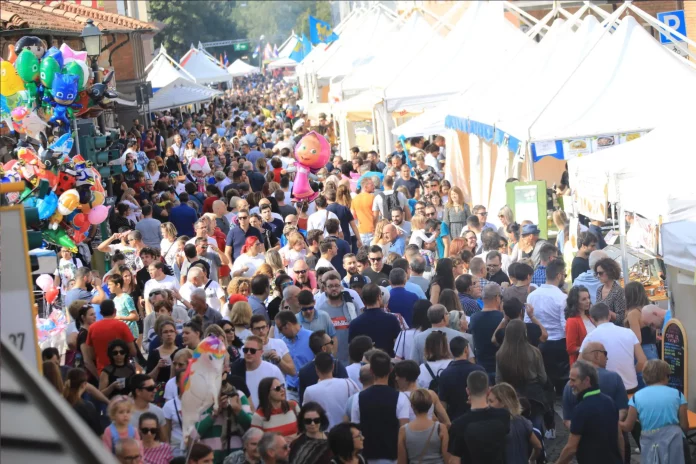by InTrieste
This weekend, the picturesque city of Gorizia will transform into a bustling hub of flavors and culture as Gusti di Frontiera, one of Italy’s largest food and wine festivals, kicks off. Drawing tens of thousands of visitors to this town at the crossroads of Italy, Slovenia, and Austria, the event promises a celebration of regional cuisines, but behind the scenes, it also serves as a critical test for a larger vision.
In a press conference held earlier this week, Cristina Amirante, the Regional Councillor for Infrastructure, unveiled an ambitious transportation plan designed to accommodate the surge of visitors. But more than just easing local traffic, the initiative is part of a broader effort to prepare the region for Go!2025, when Gorizia and the neighboring Slovenian town of Nova Gorica will jointly hold the title of European Capital of Culture.
“The special intermodal system we’ve set up for Gusti di Frontiera not only offers visitors an easier way to reach the festival but also serves as a test run for the influx of tourists we expect during Go!2025,” Amirante said, emphasizing the event’s dual significance.
To facilitate access to the festival, the region has strengthened its transportation links by increasing the frequency of trains and buses to and from Gorizia. The aim is to encourage festivalgoers to leave their cars behind, reducing traffic congestion and offering a safer, more sustainable travel option. “With these additional services, we’re making it easier for people to enjoy the festival without the need for private vehicles,” Amirante added. “This will not only improve traffic flow but also ensure that visitors can enjoy themselves without worrying about how they’ll get home.”
The Gusti di Frontiera festival spans four days, inviting visitors to explore a multitude of international and regional dishes through more than 350 food stands. The event has become a major draw for the region, and this year’s enhanced transportation infrastructure aims to make the experience smoother for the expected 700,000 attendees.
But the festival’s broader significance lies in its potential to showcase how Gorizia will manage the expected influx of international tourists during Go!2025. By February next year, the region plans to expand its intermodal system even further, incorporating air travel into its transport network. Visitors arriving by plane will be encouraged to park at the Friuli Venezia Giulia airport and use buses or trains to reach the city, reducing the environmental and logistical challenges that come with heavy car use.
“Events like Gusti di Frontiera allow us to test these systems in advance of a truly international event,” Amirante explained. “By Go!2025, we want to ensure that visitors from all over Europe will have smooth, efficient access to Gorizia using sustainable means of transport.”
The transportation upgrade extends beyond daytime services. For the first time, night trains and buses will be introduced, allowing festivalgoers to stay late into the evening without worrying about how to get home. With nighttime events, concerts, and extended festival hours, this new addition is expected to be a game-changer for both Gusti di Frontiera and future cultural events.
For Gorizia, Gusti di Frontiera is no longer just about celebrating the region’s rich culinary heritage. It is a rehearsal for the city’s future role on the European stage. As Gorizia gears up to share the title of European Capital of Culture with Nova Gorica, the festival serves as a critical test of its ability to handle the logistical challenges that come with international recognition.
As visitors savor local specialties like Friulian prosciutto and Slovenian potica, they’ll be part of something larger—a glimpse of Gorizia’s future as a sustainable, cultural destination in the heart of Europe.





























